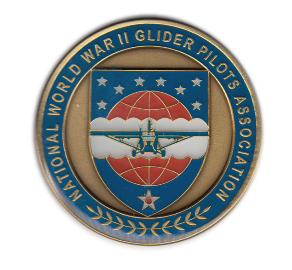| |||||||||||||||||||||||||||||||||||||||||||||||||||||||||||||||||
21st - Ardennes OffensiveBattle of the Bulge.December 21 - Battle of the Bulge Still no flying today, weather is keeping everything grounded. In 2012 the Musee en Piconrue, in the city of Bastogne, was playing a film of a recent project where high school students went out to the community
and interviewed those adults who had been at the age of 20 in 1945. A similar age to the interviewer. It was titled: “J’avais 20 ans en ‘45 a
Bastogne” “I was 20 in 1945 in Bastogne”. |
* * *
 No Photo Available |
Mainord Monroe WEAVER,Final Flight--Dec 11, 1917–Dec 25, 2014 bio-file Mainord will be missed by the |
* * *
16th - Ardennes OffensiveBattle of the Bulge. |
Between 17 December and 22 December the weather kept the aircraft from completing any resupply missions to Belgium. The 82nd A/B at St. Vith; Task Force Hogan 3rd Armored Division at Marcouray and the 101st A/B at Bastogne, were all in need of supplies and medical aid. Researched and written by: NWWIIGP Research Group. Photo is the 98th TC Sqd. of the 440th TC Group, Air Field A-90 Orleans, Fr. At 2030, that same day [Dec. 17], a phone call from Chief of Staff, XVIII Corps (Airborne) was placed to Brigadier General Anthony C. McAuliffe, Acting Commander of the 101st Airborne Division, for their immediate deployment to Bastogne. Both the 82nd Airborne Division and 101st A/B were rushed to the Ardennes. |
|
The 82nd took point, bypassing Bastogne, and the 101st was to hold Bastogne. This action and the ensuing events would become known as the Battle of the Bulge.
Researched and written by: NWWIIGP Research Group. Photo is the 98th TC Sqd. of the 440th TC Group, Air Field A-90 Orleans, Fr. Read More... | |
* * *
Robert "Bob" C. CaseyFinal Flight-- December 11th 2014.-
Bob’s obituary | |
|
Photo provided by Robert C. Casey Philippe Esvelin Collection. |
Robert Casey was one of those rare glider pilots who flew three major combat missions. Bob was assigned to the
82nd Squadron of the 436th Troop Carriere Group. He flew Normandy
(Elmira mission), awarded Air Medal GO #33, IX Troop Carrier Command, awarded on 5 July 1944 ; Flew Holland (Market) recieved 1st Bronze
Oak Leaf Cluster GO #117, IX Troop Carrier Command, awarded on 2 November 1944; and the invasion of Germany (Op. Varsity) Varsity, 2nd OLC.
The last operation was his hardest operation with two major firsts, one they had to fly for two and a half hours on
double tow. The 436th landed in LZ S.
Second they were landing in an unsecure landing zone. In Bob's Intelligence Report he noted under Suggestions Regarding Glider Operations and Training: “Have
gliders land in secured field from now on.” |
* * *
George R. WhittenFinal Flight-- December 9th 2014.-George’s obituary | |
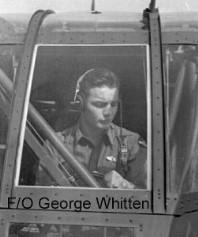
Charles Day Collection The glider is unique as it was fitted with single pane, clear view, safety glass rather than the cellulose acetate. The T.O. for compliance with change over kits was not printed until January 14, 1944 so the image had to be made at least a couple months later. |
Born in Pittsfield Maine in 1924, George Whitten graduate from Uxbridge Massachusetts High School, Class of 1942. He enlisted in the US Army Air Corps during WWII and graduated from advanced glider training at Victorville, California in class 43-4 on April 6, 1943. Before D-day he was shipped over to the European Theatre where he was assigned to the 90th Troop Carrier Squadron of the 438h Troop Carrier Group as a Glider Pilot. He flew a glider in Normandy Operation “Overlord”, Elmira glider mission where he received a Purple Heart for injuries sustained in combat:
|
|
He also recieved an Air Medal for his part in the Normandy operation. Fourth from the bottom: 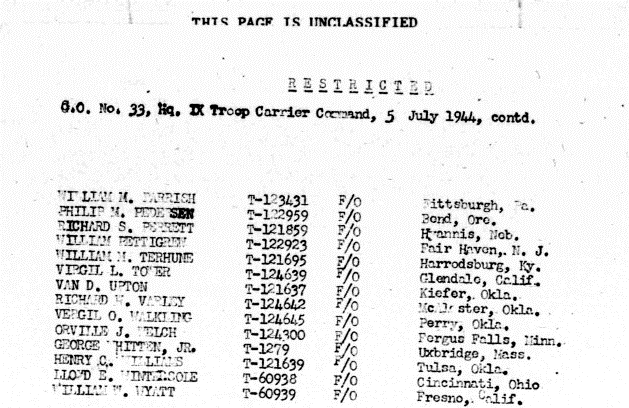 Two months later, George flew the Holland Operation where he was awarded a second Air Medal in the form of a After the war George owned and operated Whitten Corporation, located in Mendon MA, until his retirement in 1993. Mr. George R. Whitten Jr., 90, of Auburn MA, died on Tuesday December 9, 2014. | |
November 2014
Capt. Clyde Martin LittonFinal Flight-- November 30th 2014. b.1917 - d.2014-Martin’s obituary | |
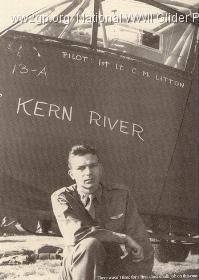
Photo by Capt. Clyde Martin Litton |
Martin Litton was born in Los Angeles on February 17, 1917. He grew up in Southern California. Graduated from UCLA, class of 1939.
Martin entered the glider program in June 1942.
|
By direction of the President, under the provision of Exectutive Order Number 9158 (Bull 25, WD 1942), and amended by Executive Order Number 9242-A (Bull 49, WD 1942) and in accordance with authority delegated by the War Departiment, and pursuant to authority contained in letter, file 200.6, Headquarters, United States Strategic Air forces in Europe, Subject: "Awards and Decorations, dated 8 September 1944, an AIR MEDAL is awared to the following named offiers, organizations and residences as indicated, for meritorious achievement whil participating in aerial flight during the period 17 September 1944 to 23 September 1944. As Troop Carrier glider pilots, these officers demonstrated exceptional airmanship and resolution in the execution of missions vital to the vertical envolopment of enemy position in Holland. Piloting thier gliders over extended routes in difficult weather, and braving hails of flak and small-arms fire, they formed part of the vast glider armada which successfully landed thousands of airborne troops and huge quantities of combat equipment and supplies at designated objectives behind enemy lines. Their outstanding achievements in the greatest airborne operation in military history reflect the highest credit upon the military force of the United States.Martin went on in life to do great things especially in the conservation of our National Parks, but to the glider pilots Market was his finest hour. Martin made his final flight on November 30, 2014 at the age of 97. | |
* * *
Happy Thanksgiving | |
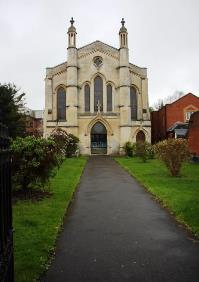
Photo by B. Overman | England, November, 1944, the 438th Troop Carrier Group stationed at RAF Greenham Common Airfield, has been
given the task of organizing a special Methodist Thanksgiving Service for the men of 438th TCG and the 53rd Wing HQ. The 53rd Wing’s headquarters was also
located at Greenham Common. Greenham Common sits in Berkshire near the small town of Newbury between Reading and Swindon. |
Lt. George Collins,
a Troop Carrier pilot, commented about the service, Approximately seven hundred U.S. Service men from our wing attended this Service. The song, at the close, “America the Beautiful,” sung from the heart by seven hundred airmen homesick for home in America, never sounded sweeter.There was a close relationship with the towns people and the 438th. When the 438th recieved their first glider the Group arranged it to be put on display in the town for the people of Newbury. In February 1945 the 438th moved to Prosnes France. George Collins also wrote Our stay in England is memorialized in the form of a lectern with an inscribed tablet at the Northbrook Methodist Church in Newbury. This is done to commemorate the friendship and hospitality shown to us during our stay there. | |
* * *
Final FlightLt. Col. Jack Rawls Jones Jr., USAF (Retired Reserves)passed away November 15th 2014.b.1916 - d.2014 -Jack’s obituary | |
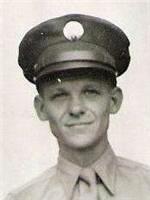 | Jack graduated from Advanced Glider Training from South Plains Army Airfield and was
commissioned as a Flight Office on January 21, 1943. He was assigned to the 53rd Squadron, 61st Troop Carrier Group.
On 18 September 1944, 2nd Lt., Jack Jones piloted a glider to Landing Zone T near Groesbeek, Netherlands, in Operation Market.
On landing, his glider nosed over. The glider had been subjected to German anti-aircraft fire and
other weapons. The LZ had just been cleared. One of the glider riders was seriously wounded and did not survive. JACK R. JONES, O 887 793, Second Lieutenant, Air Corps, 53rd troop Carrier Squadron, 442nd Troop Carrier Group. For wounds received in action against an enemy of the United States, on 18 September 1944. Home address: Meriam, Kansas. |
| The Air Medal: GO #107, Hq. IX Troop Carrier Command, 6 November 1944; and the Orange Lanyard
for his participation in Operation Market (Holland). From his obituary written by his children: Daddy distinguished himself in World War II as a glider pilot, seeing action in, among other places, Northern Africa, Sicily, and Holland. He received the Purple Heart after being shot in his glider as he was transporting equipment. Daddy was proud of his service in the early Army Air Corps. Later, when the Army Air Corps became the Air Force, he became an officer, and was proud of attaining the rank of Lt. Colonel (Retired Reserves) Jack made his final flight on Saturday, November 15 in Baton Rouge, Louisiana | |
* * *
Veterans Day
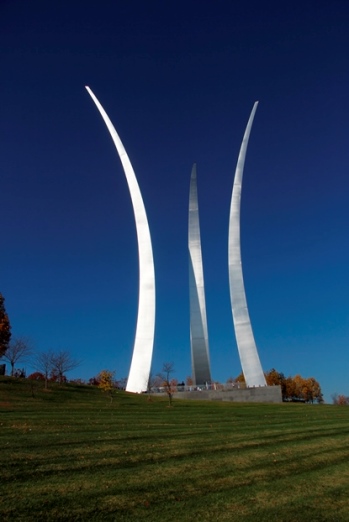 Photo by B. Overman |
US Air Force Memorial, Arlington VA, early morning Veteran's Day, 2014 |
 Photo by Overman |
Glider Pilot's Memorial Plaque which rests under a beautiful red maple tree at Arlington National Cemetery. |
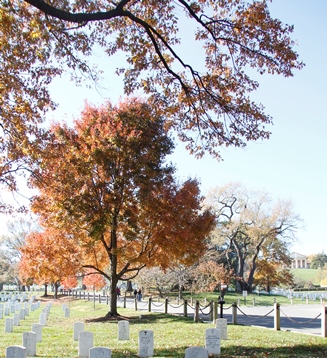 Photo by Overman |
As you can see from this photo the Glider Pilot's Memorial red maple tree, located in section 33, sits in a beautiful setting at Arlington National Cemetery just down from Arlington House. |
|
V-Day -1: |
 Photo by Overman 17th Airborne Color Guard |
October 2014
Germany 2015:
In memory of all who bravely fought in the greatest one day air assault in history, this frequently forgotten Operation, Varsity, will be honored in March 2015.
Several members of the NWWIIGPA are planning a trip to Wesel, Germany in late March, 2015 to commemorate the 70th anniversary of the Varsity Operation.
As it happens, the Scions of the 17th Airborne Division, who the 50th &53rd wing crews dropped from their C-47s or flew in by glider, are also planning to be there as well and we will join forces with them (and possibly the British 6th Airborne) on March 24th 2015.
Details regarding some sort of ceremony are still being worked out, but here is the plan so far.
To join the group in Wesel, arrange your air transportation to Frankfurt. There is train service from Frankfurt to Wesel or it is about 3 hours away by car. Most of us will be staying at the Hotel Haus Duden, whose back yard was the assembly point for the 435th TCG Glider Pilots. It is recommended that you make reservations info@hotel-haus-duden.de at least for the nights of March 23 and 24 and any additional days that you might want to spend in the landing and drop zones.
The Scions of the 17th Airborne are doing a 10 day package tour that will include Bastogne, Wesel and the Netherlands American Cemetery in Margraten. This tour begins and ends in Brussels, Belgium and the Scions have graciously invited our members who wish to join them. For information contact Jeff Schumacher at ScionsTrip2015@gmail.com.
If you have any questions contact Bruce Overman (r.bruce.overman@gmail.com). Even if you don't have questions but are planning on going, contact Bruce so we can get a rough idea of how many people from our organization might attend.
Information will be added as updates are received.
Halten Sie Mobil
* * *
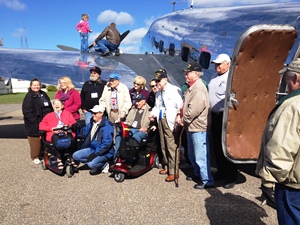 | The 44th Annual Reunionwas a great success. Weather played a big part in arranging our schedule. However the weather did gave way to allow Scott's Lodestar and Cowden&rsqio;s P-51 (Pecos Bill) to arrive at the James Airfield on Saturday to give flights to those attending the reunion. |
| On Thursday night we had three excellent presentations: John W. McCullough presented on the Normandy area museums and what they each have to offer; Patricia Overman and her cousin from Draguignan, France, Philippe Arakelian presented on the French who celebrate every year their liberation by driving all different Allie WWII vehicles in convoys that parade the liberated towns of Southern France and Chuck Hobbs presented on Holland and the research that he has done. More... | |
* * *
RAY FARY passed away on 1 October 2014.b.1925 - d.2014 - Obituary | |
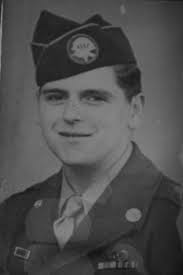 |
Ray Fary was an active member of the National WWII Glider Pilots Association. Ray was one of those rare heroes known as a “glider rider.” He came into the 82d Airborne Division, 80th Airborne Anti-Aircraft Battalion, C Battery, 1st Platoon, 1st Squad, as a replacement, one of those men who had to come into a company by himself without knowing anyone and having to fit into a group of men who had been fighting through the Normandy campaign. Ray recalled on his arrival to Leicester, England; “the very first words I heard were; ‘WELCOME TO THE AIRBORNE’; We didn't know what those words meant the Officer explained; ‘the unit that you are now assigned to, left yesterday for the airfields on an airborne mission, should they have many casualties, you will be sent to fill the vacancies, your mode of travel will be by either landing craft or by glider’ None of our group had ever heard about or seen a glider ( this is where I actually left the 75th Infantry Division, and became a glider rider in the 82d Airborne Division Replacements)” The 82nd fought for 32 days and returned to Leicester on July 18th 1944. More |
September 2014
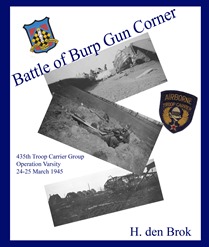 | New book published, Battle of Burp Gun Corner will debut at the National WWII Glider Pilots’ reunionThe author, Hans den Brok from the Netherlands, will give a presentation on Thursday evening and the book will be available for sale throughout the reunion. Hans will be showing, never before seen, footage of the take-off, glider landings, and before and after battle scenes. The film was shot by then, Capt. Charles Gordan, Glider Commander of the 435th TCG during March 24th and 25th 1945. All book proceeds will go to the Silent Wings Museum. |
* * *
Scott Glover and Cowden Ward are at it again!
Scott, who flew his C-47 Skytrain to our last two reunions, and Cowden, who last year flew his P-51 Mustang, will be joining us once again at Bloomington.
Scott Glover is the owner of the Mid America Flight Museum and Historical Air Tours in Mount Pleasant, TX. Jen and Cowden Ward, owner of “Pecos Bill”, a P-51D Mustang, operates with the Freedom Flyers. Both Scott and Cowden have informed us that they will be at our reunion with their famous war birds.
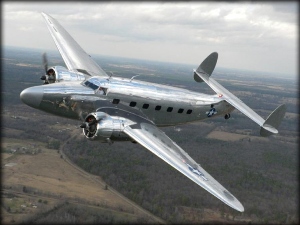 | This year Scott will be flying his C-60 Lockheed Lodestar. Glider pilot veterans are very familiar with the Lodestar. Don Ehr, a glider instructor at both Lubbock, TX and Laurinburg Maxton said, “The C-60 was a joy to fly. It was used for many things during the war including submarine chasing off the coasts, bombing, and towing gliders. I logged a lot of time as co-pilot in a C-60.” |
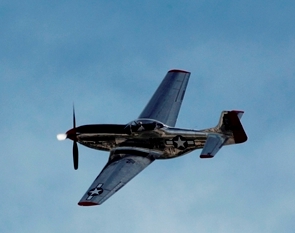 | Cowden has also informed Scott he would be on his tail again this year. Last year at our reunion it was a thrill for the 12 veterans who each climbed into “Pecos Bill” for a joy ride. Bill Beach, a C-47 pilot during WWII, had it down to the minute when he said, “I have waited seventy-one years, four month, five hours and twenty minutes to fly in a P-51.” What a gift! |
August 2014
Colonel Robert "Bob" Gates, USAF (ret.) passed away August 9th 2014.
b.1919 - d.2014 - Obituary
Bob was a long time friend of the late Bob Hope and both were instrumental in establishing the Bob Hope Village in Fort Walton Beach Fl. for retired Air Force Spouses. During World War II Bob then, Major Bob Gates, was the Commanding Officer of the 88th Troop carrier Squadron and that Squadron was a member of the 438th Troop Carrier Group who led the air assault on Normandy. Bob was a long time member of the National WWII Glider Pilots Association. Bob said that he was proud of the fact that at one time he had over 100 glider pilots in the 88th TCS. He also mandated that every power pilot towing a glider had to have time in a glider; that the tow pilot needed to know what was going on in that glider they were towing. Bob once looped a Horsa glider with glider pilot 1st Lt. Raymond E. Darling Jr. and later Bob towed Ray on D-day into Normandy. Unfortunately Ray Darling was killed when his Horsa crashed on landing.
High flight to you Bob!
July 2014
Colonel NORMAN WILMETH passed away on 7 July 2014.
b.1918 - d.2014 - Obituary
Col. Norman Wilmeth was one of those rare Glider Pilots who flew more missions than most AND survived. His Troop Carrier Group was the 439th and his squadron was the 91st. He was well respected by the core of the 91st and was held in awe by the replacements. Norman flew four combat missions during WWII; Normandy, Southern France, Holland, and Rhineland (the invasion of the German homeland; air assault code named Operation Varsity).
One of Norman’s most important roles in the war was Commanding Officer of one of two Combat Control Teams (CCT) More...
June 2014
Letters of Commendations
On behalf of the National World War II Glider Pilots Association and the Silent Wings Museum six students recieved commendations for promoting and educating the next generation about the history of the WWII glider pilots. These students accomplished this through presentations, a written article, displays and even a radio talk show discussion. This was a great honor for those of us who flew those aircrafts.
Congratulations to:
THANK YOU!Johnnedry Ceballos, NY
Elias Lee Hansen, NJ
Connor Humen, WV
Hayden LeMonds, MN
Bryan Pagon, NY
Edison Zhu, NY
* * *
For the 70th Anniversary the Historical Record of the 88th Troop Carrier Squadron to the Commanding General, IX Troop Carrier Coammand, Historical Section A-2 was
posted in snippets and each post announced on twitter.
* * *
The Reunion registration papers were mailed this month to the members of the Association.
May 2014
Created and posted Honor Roll for all pilots who flew gliders and were killed in action or in the line of duty.
* * *BATTLE OF BURP GUN CORNER Presentation | |
 |
WWII veteran Major Robert Swenson, with the assistance of Patricia Overman, will recount the tale of the Battle of Burp Gun Corner in March of 1945. As Part of Operation Varsity, Major Swenson piloted a Waco CG-4A. After landing Maj. Swenson became a member of the 435th Provisional Glider Pilot Combat Team. The presentation will be at the Museum of Flight in Seattle, Washington on May 10th from 1:00 PM to 2:00 PM. Further information at: Museum of Flight |
April 2014
World War II Pilot’s Remains Identified
Defense Department forensic scientists identified the remains of Army Air Forces pilot 2nd Lt. Verne L. Gibb of Topeka, Kan., who had been missing since the end of World War II, announced the Pentagon. Gibb’s burial with full military honors is scheduled for April 23 in Leavenworth, Kan., states the DOD’s release. On Oct. 23, 1945, Gibb was one of four crew members and two passengers flying a routine cargo mission in a C-47B from Myitkyina, Burma, to Chabua, India, when the aircraft disappeared in unfavorable weather. Searches for the aircraft were unsuccessful and the US military declared the six dead. In 2002, US defense officials acquired remains that proved to be Gibb’s back from an American teacher in Burma who received them from a Burmese priest, states the release. DOD forensic scientists used circumstantial evidence and mitochondrial DNA to help identify Gibb. From AirForce Magazine, Daily Report eNewsletter.
March 2014

Varsity operation: This is the 439th C-47s
and gliders on airfield Chateaudun A-39. The marking of L-4 on the side of the nose of the glider indicates that this is
squadron 91’s section of the runway. These C-47s will work very hard to just get off the ground, towing two gliders many of
them containing trailers, howitzers, and jeeps as well as fully equipped men. When towing two gliders fully loaded the stall to
pull ratio is very narrow. On their way to Landing Zone, (LZ)-S, Pilots and glider pilots will work hard for the two and a
half hour flight to maintain top speed and to keep gliders separated. After that time they will fly and land in the middle
of approximately 10,000 German troops supported by tanks, self-propelled artillery, heavy artillery, field artillery, and 20mm
flak guns. The German infantry occupy every farm house and outbuilding, as well as miles of trenches dug into the farmland.
They will be armed with rifles, burp guns, and machine guns. Every field and nearly every clump of woods contained an anti-Aircraft gun.
The 439th consisted of Serial A14 and A15 carrying a mix of units.
It all began at 8:30 hours 24 March 1945
February 2014
Seventy years ago this month the following Troop Carrier Groups transferred from the US to the ETO:

IX Troop Carrier Command Unit Histories, Oct. 1943 - Nov. 1945 AFHRA Microfilm Reel#C-5019, 1975
Play our Crossword Puzzle
This crossword puzzle was first printed in the Silent Wing’s Newsletter in the September 1978 issue.
Created by Marianne and Mel Brockman.
January 2014
Tim Bailey had his final flight on, January 24th 2014. We will miss him and his
constant advocacy for the WWII Glider Pilots keeping our history alive. You kept us mobile Tim.--
Tim’s obituary
My Bail out at Ft Sumner, NM
My wife reminded me the other
day that it had been 71 years this month when I had to bail out of a CG-4A glider in training.
We had been on tow for about one hour, when the tow plane brought us in close to the field at 4500feet. We cut off.
I was in the front seat as instructor, had chosen a gilder pilot to take my place as student instructor. I had
him sit in the rear seat of the small three-place glider, to give him his final instructions. I told him to do two,
two turn spins to the right, and two, two turn spins to the left, and then take her in and land. After the first two
turn spin, I told him, “You were slow at popping the stick forward to recover from the spin, and you mushed out
of the spin.” When he did the spin to the left, he recovered by ramming the stick forward very well.
The glider came out of the spin. But then things began to happen.
We were diving down to Earth.
I said, “pull out”. And looked back at him. He was pulling back on the stick and said he couldn't
pull the stick back, that it was stuck. I immediately grabbed hold of the stick to help him, and even braced
my feet against a flimsy dash that held the few instruments we had.
It felt like the stick bent but
probably didn&rsquot. Just when it seemed we were going to dive clear to the ground, the glider came up and out
of the dive with the stick still stuck in forward position, it stalled and started to dive again.
Just as we stalled, I gave the order to bail out. The other glider pilot, (wish I remembered his name) immediately
opened the back door, and rolled out. I tried to follow him. I unlocked the handle on my right side, and shoved the
canopy up into the wind just as we began to dive again. The wind was supposed to tear off that door, I was told, if
you ever have to bail out. Just as I rolled over the side, the canopy came back down on me, and held my left foot in
its grasp only for a split second. Some how I tore my summer flying trousers from the knee down along the zipper
pants leg getting out of the glider. When the door slammed down on my foot it caused me to hang staight down from
the glider. The glider was now in full dive again. I kicked myself loose with my right foot and pulled the ripcord
at the same time. My chute opened just as I left the glider. For a few seconds I felt the safety of the chute and
harness. This was not to last.
The glider dived, and as before when it reached a certain speed, it came
up very near to our chutes and looped on over. It did this three times on our way down. The last time it missed my
chute by only a few feet.
We landed in a pasture near a windmill but our chutes dragged us in the high
wind through many little hidden cactuses on the ground.
Needless to say, it was a narrow escape we had,
only to be called in by a Lieutenant who tried to make out that we had intentionally bailed out for the fun of it.
He called us in separately and tried to find fault in out testimony. He didn&rsquot, but he left us both with the
feeling of suspicion that we had done something wrong.
The day we bailed out orders came out that I was
to leave for Victorville, California. I never knew what went wrong with this glider until later when glider pilot
Chester R. McDowell told me all about what had happened. When the stick was popped forward, to bring it out of the
spin, the middle stick lodged under the loose canvas back at the top of the empty seat in front of the student when
he rammed the stick forward to bring the glider out of the spin. If anyone knows who the other glider pilot that was
with me on that eventful day I would welcome his name and address.
I have the handle of my parachute on a
plack mounted on the wall dated January 2 1942, New Mexico. --Tim Bailey
2018
2017
2016
2015
2014
2013
Christmas
P-51
BronzeStar



